Title : Biotechnology in aquaculture: A crustacean oocytes delivery tool for large-scale gene silencing
Abstract:
Oviparous animals are characterized by an elaborated yolk production process and packaging in the oocytes before egg-laying. The major yolk protein (vitellin) is usually produced as vitellogenin outside the egg (Vg) and internalized into oocytes by receptor-mediated endocytosis (RME). Like many other crustacean species, M. rosenbergii vitellogenin is expressed in the hepatopancreas. M. rosenbergii vitellogenin possesses 2537 amino acids and shares at least 33% identity with other decapod crustacean vitellogenin, such as shrimps, crabs, and crayfishes. Vg contains several domains, including the lipid-binding domain involved in yolk-lipid vesicle formulation. Upon arrival at the oocytes, the Vg-receptor (VgR) extracellular domain interacts with a distinct amino acid sequence of the Vg and internalizes it to form yolk droplets. One distinctive characteristic of the VgR family is their role in the massive internalization and accumulation of lipoproteins. Vitellogenesis is recognized by an immense accumulation of the Vg in the oocyte that will serve the embryo's metabolic needs for development and growth. For that reason, we predicted that Vg endocytosis could be used as a valuable tool for oligonucleotides' high throughput delivery into the oocyte. Indeed, a specific Vg-derived peptide sequence (Vg24) was found capable of oocytes' specific entry by in vitro and in vivo means. However, a peptide with the same amino acid composition but scrambled order (scVg24) could not enter the oocytes. Vg24 synthesized with nine Lysine-Histidine repeats successfully induced dsRNA electrostatic interaction and piggybacked the bound dsRNA into M. rosenbergii oocytes. When PAX6 (eye development transcription factor) dsRNA was piggybacked, that led to eye development retardation in embryos of the treated mothers. Alignment analysis of the M. rosenbergii Vg24 shared 85% identity with the corresponding Vg peptide sequences from other decapod species. The peptide similarity proposes cross-reactivity between the M. rosenbergii peptide and the VgR of other decapod species. The developed tool might serve to deliver other than dsRNA molecules into crustacean oocytes and might be a powerful asset for large-scale silencing or editing aquaculture-relevant genes of crustacea.



